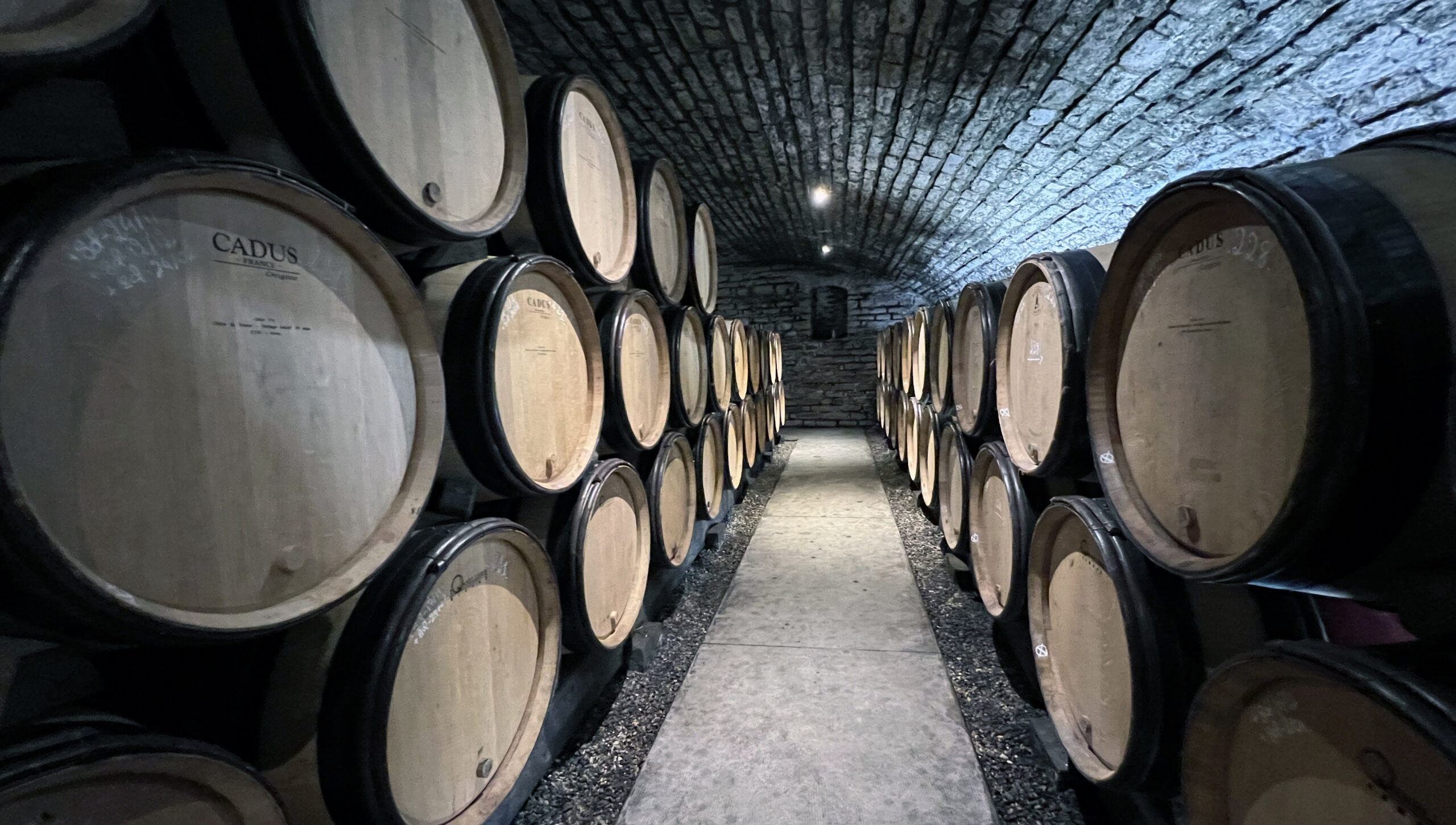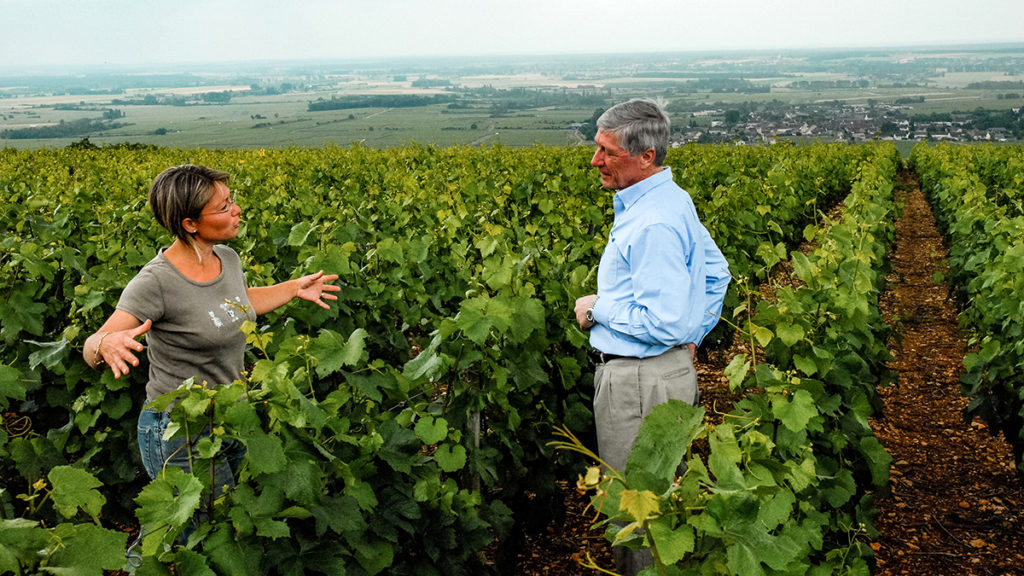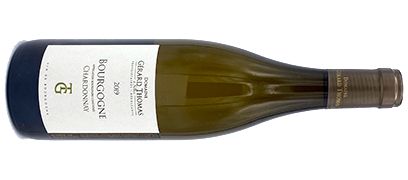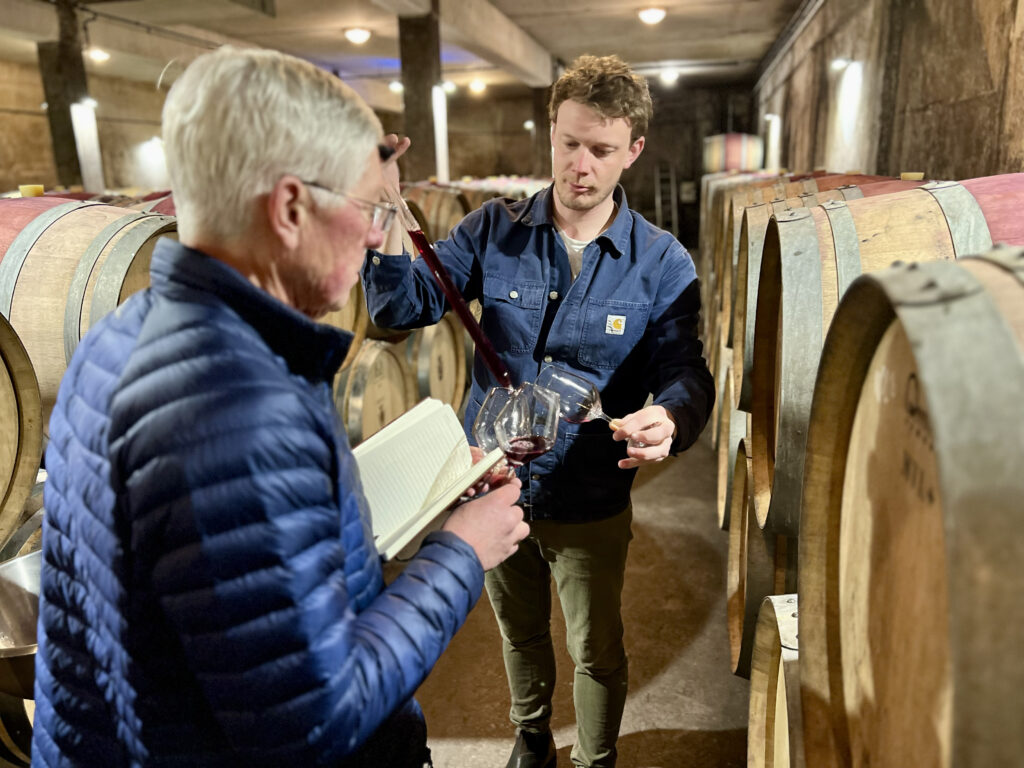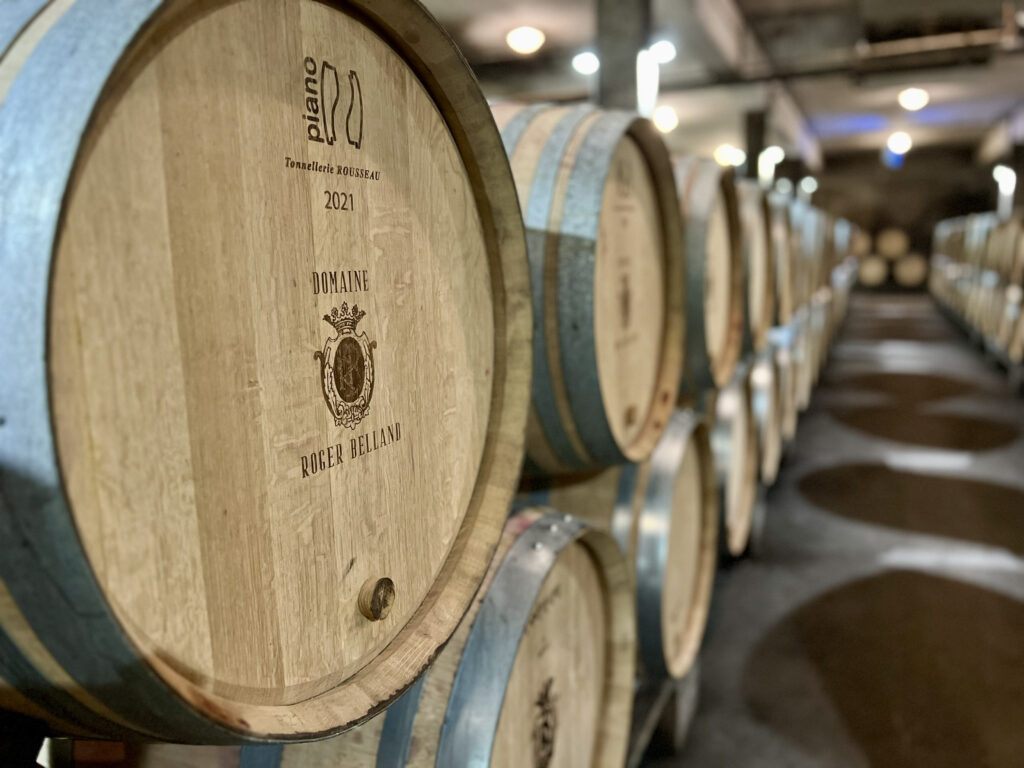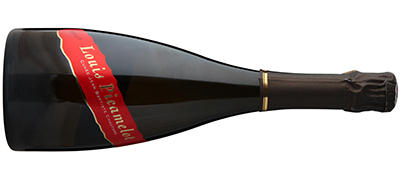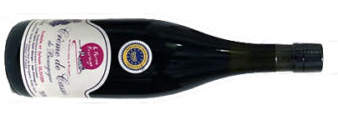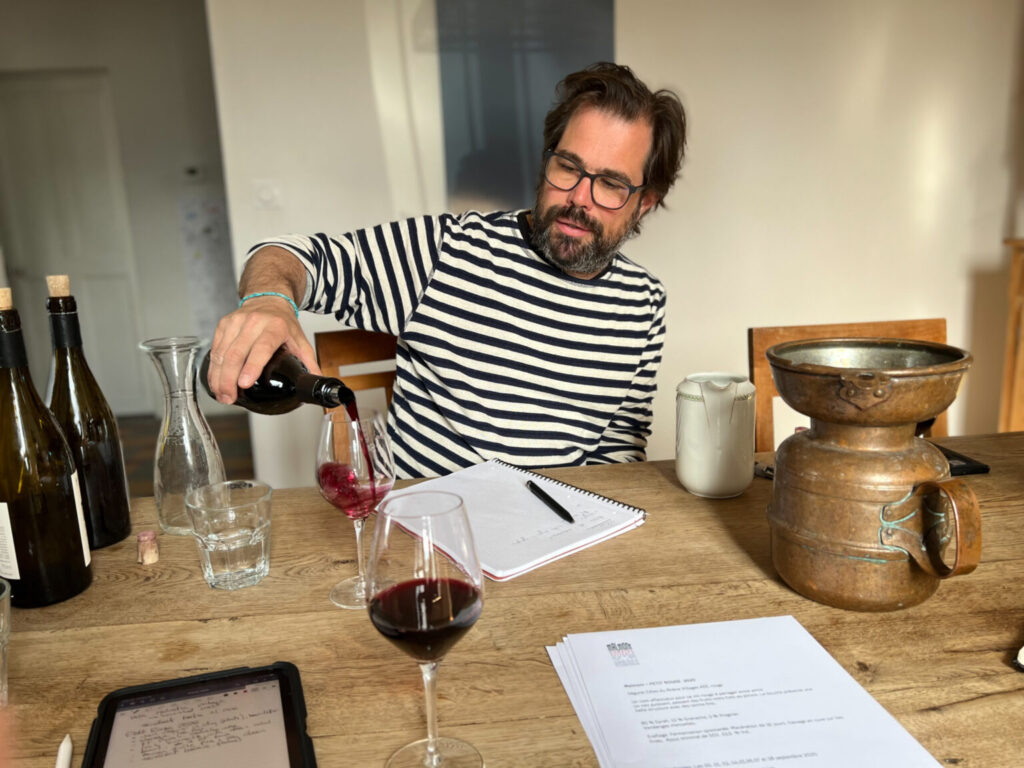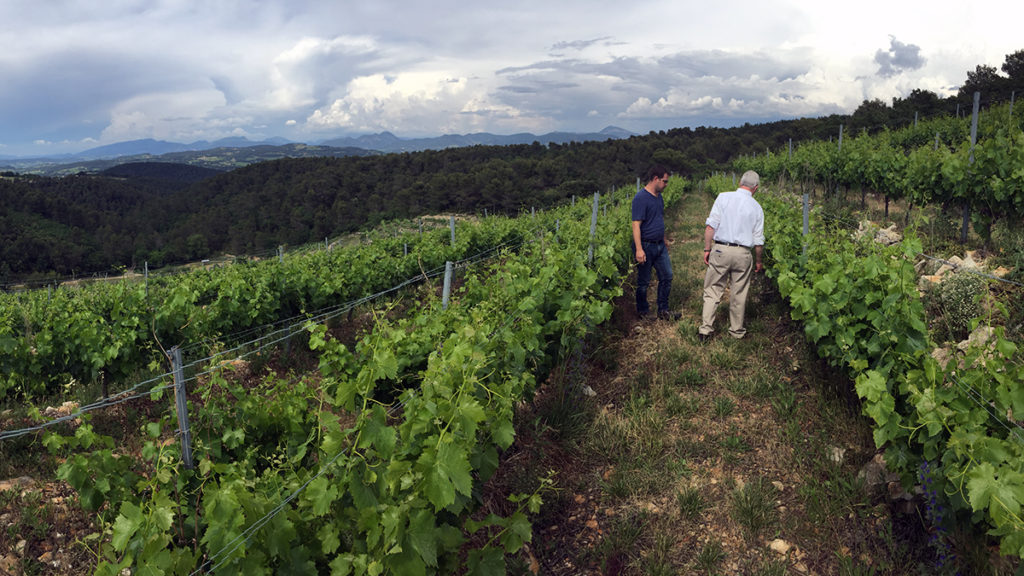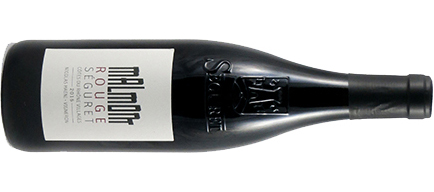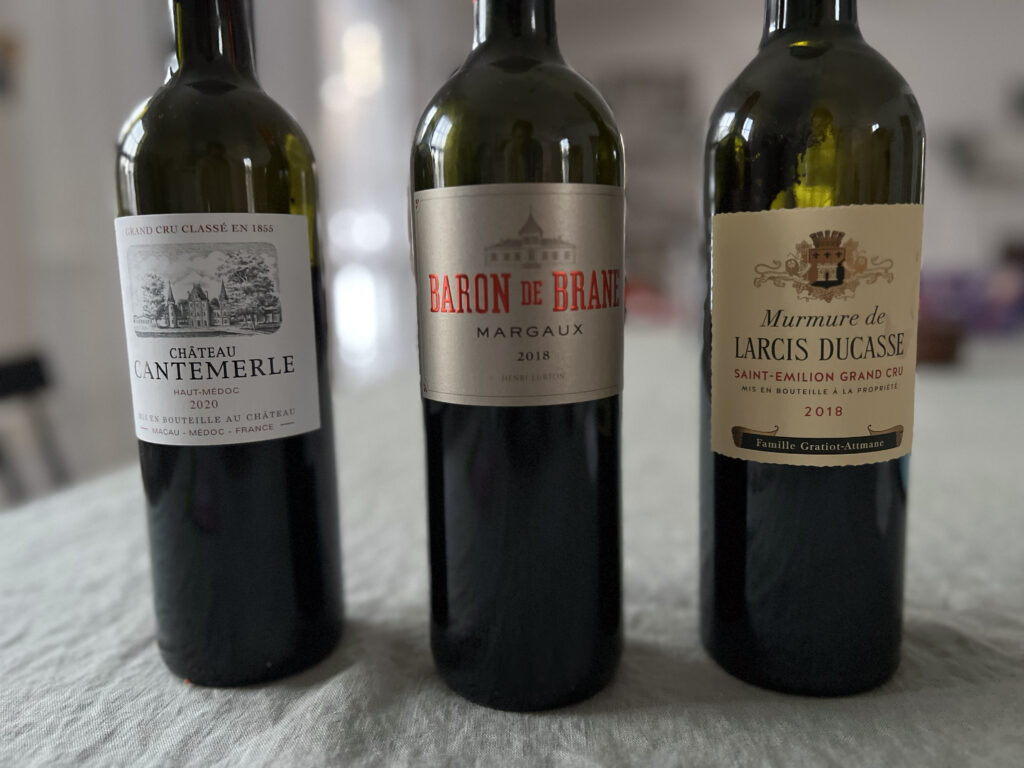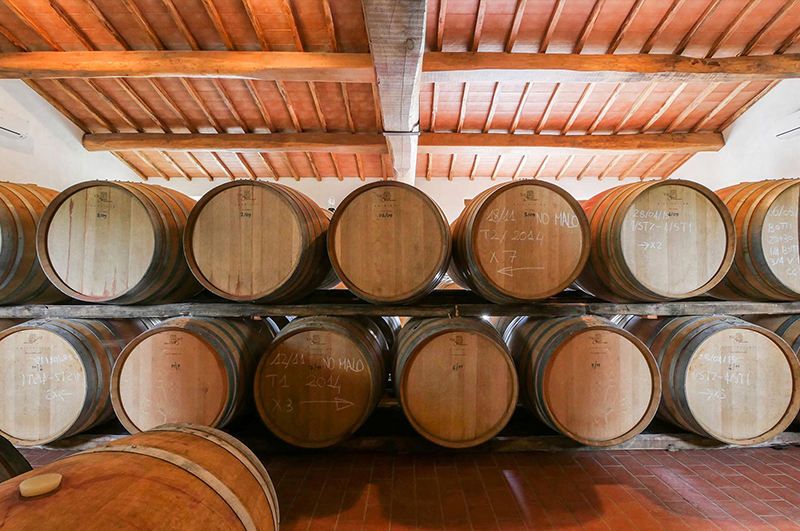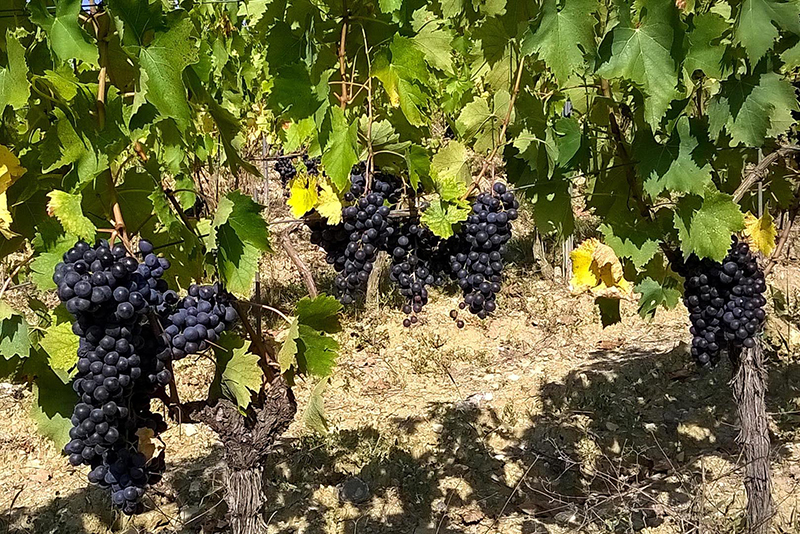As this Futures Offering arrives in your inbox, it’s approaching the dead of winter in Burgundy. Bear in mind that Burgundy’s climate is continental, which means that winter is real, complete with snow, ice, and biting winds despite our warming world. A beautiful quiet descends on the vineyards, and with la taille now shifted later to reduce the risk from spring frosts, it is even quieter in the vines than it used to be. If you are lucky enough to be there at the right time, the views can be magical: morning sun sparkles through layers of ice along the wires that hold grapes up in summer, or rime frost paints a beautiful feathery coating on walls and vines alike. For those in the wine business, late winter is a good time for visiting cellars.The producers have less vineyard and cellar work to compete for their time, and you may get a look at two vintages in barrel. Bottling schedules are all over the place these days: some bottle after just under a year so their barrels are available for the fall’s new harvest; others extend the elevage to as much as another year, and many bottle their Burgundies in late winter, 16 months or so after the harvest. For this latter group, tasting from barrel just before bottling usually offers a reliable sense for what the wine will be like in the bottle; for others, more surmise and projection is needed. Ansonia père and fils will be off to Burgundy in March for our annual visit, but in the meantime we are excited to bring you our February Futures offering. It includes both our first offers of red and white Burgundy from the abundant 2023 vintage along with some Crémant de Bourgogne; Creme de Cassis for the perfect Kir, wine from the Southern Rhône and the Alsace; another terrific pair of Chiantis from Radda; and the latest results of our continuing quest for just the right wine from Bordeaux. As always, our goal is to propose wines for every taste and budget, and we hope you’ll find something of interest in this offering’s wide range of geography and prices. If you do, please be sure to submit your orders, in case or half-case lots, by the Order Deadline of Sunday, February 16, 2025. We will place orders for the wine immediately thereafter. Jump to Section
Gerard Thomas
Roger Belland
Mégard
Picamelot
Fruirouge
Malmont
Frey
Bordeaux
Poggerino
February Futures
Order Deadline 2/16
Gérard Thomas
St-Aubin, Burgundy
The Domaine Gerard Thomas is in St. Aubin, the formerly-off-the-radar side valley that comes into the Côte d’Or between Chassagne-Montrachet and Puligny-Montrachet. The Domaine has always offered excellent pricing, and has a loyal group of futures buyers developed over many years. The domaine’s wines from the 2023 vintage are delicious, providing further confirmation of the high quality of Chardonnay from this vintage. The Bourgogne Côte d’Or 2023 is particularly nice. It opens with a bright nose of Meyer Lemon. In the mouth there is good roundness that flows into mouthwatering freshness. A nicely muted note of oak joins the fruit in the mouth, providing just the right touch for the weight of the wine. There is length rarely found at the regional level. In short, there is a lot of wine here for the price. The St. Aubin 1er cru “Murgers des Dents de Chien” 2023 is excellent. The nose offers a touch of oak with the ripe orchard fruit, and in the mouth there is good amplitude across the palate. Though this Murgers 2023 is generous in the mouth, it is more than usual a wine of finesse rather than power. This wine will best show its considerable beauty with a subtle flatfish meunière (say Grey or Dover sole) while dining al fresco on a midsummer evening. Leave the bigger whites for Grilled Swordfish with Chipotle Sauce or Carmelized Sea Scallops. The Puligny-Montrachet 1er cru “La Garenne” is also especially attractive in this vintage. The balance is just right, with plenty of supporting material and excellent concentration, yet an attractive lift on the palate. A long, refined finish completes the picture. This wine is surprisingly open for a Puligny so close to its bottling, and we expect to be turning to it regularly from the time it arrives.
Roger Belland
Santenay, Burgundy
The 2023 growing season in the Côte d’Or followed one that produced both large quantity and excellent quality. The 2021 harvest the year before had been among the tiniest in memory, and so a bounce back in quantity in 2022 was unsurprising. But anyone who expected yields to drop back in 2023 did not count on the vagaries of nature. After twists and turns along the way, including average heat that ultimately exceeded 2022’s, 2023 produced another bumper crop, with quantities particularly high in the reds of the Côte de Beaune. By and large these reds are juicy and fruit-forward, and will be for early drinking rather than for laying down. Roger Belland’s reds from the 2022 vintage were so well received last year that we reserved a second batch of the crowd-pleasing Santenay 1er cru Beauregard 2022. It’s a generous, elegant wine that has only gotten better since our first importation a year ago. The ripe fruit and earth have integrated nicely, and the finish is pleasantly long. Burghound praised its “fine richness and volume” and its “suave and succulent medium-bodied flavors.” He thought it could be enjoyed young but “has the stuffing to repay up to a decade of keeping.” The 2023 red Santenays will be with us for a while, so we’ll take another look at them in the Spring and decide which others to bring in from the vintage. There’s one 2023 Belland red we won’t wait for. Santenots is a great vineyard that lies on the border between Meursault and Volnay; and because of the fame of the whites to the south and the reds to the north, its wine is called Meursault when it is white and Volnay when it is red. Volnay at its best is the most elegant red of the Côte de Beaune. Belland’s Volnay 1er cru Santenots can be his most refined and elegant wine, and the 2023 shows all the hallmarks of its excellence. It mixes precision with a beautifully defined texture, and its fruit recalls dark cherries and plums with a floral note of violets. It shows excellent persistence on the palate, and should grow into something special with time in the cellar. The 2023 vintage was excellent for whites in the Côte de Beaune, and particularly so at the Domaine Roger Belland. We thought four showed particular charm, and we’ll include them all, letting you find a match to your taste and budget. The village of Santenay is more famous for its reds than for its whites, but at Ansonia Wines Belland’s Santenay 1er cru Beauregard blanc is a perennial favorite, particularly for its value relative to other white burgundies in its Côte de Beaune neighborhood. Santenay 1er cru Beauregard blanc is simply delicious in 2023, with all the attributes that make Burgundy a mecca for the world’s white wine lovers. The nose offers ripe yellow fruit and wood in good proportion, along with a hint of freshness. The mouth confirms this, where very good volume joins with just the right amount of energy to provide lift and cut, adding mouth-watering freshness to the ripe fruit and the accompanying touch of vanilla. This wine will be an excellent candidate for pairing with food, and should drink well from the outset. An awfully good impression of Chassagne-Montrachet, at half the cost. The other three whites are from the “big three” Côte de Beaune villages where the whites are front and center: from south to north, Chassagne-Montrachet, Puligny-Montrachet, and Meursault. Belland’s Chassagne 1er cru Clos Pitois blanc is from a large monopole in the Morgeot sector along the border with Santenay. Like other whites from Morgeot, this is an opulent and powerful wine, rich and mouthfilling, with plenty of concentration. There is ripe orchard fruit with a floral overlay, and the flavors persist well on the palate. No shrinking violet, this Clos Pitois blanc has the substance to stand up to dishes with robust flavors. Belland’s Puligny-Montrachet 1er cru Champs Gains 2023 is yin to the yang of Clos Pitois. Here elegance dominates rather than power. The fruit includes floral overtones and mineral notes, and for now the wine is less assertive than the Clos Pitois. (Champs Gains is on the upper part of the slope, near La Garenne). There’s precision and detail in this wine right now, and more refinement and subtlety can be expected as it develops in the bottle. You have heard us caution for years that Puligny can stay closed for a while, but we were surprised at how well the 2023 showed after just a few months in the bottle. It is already delicious. Belland’s Meursault 1er cru Santenots 2023 fits somewhere in between the Chassagne and the Puligny, and it is gorgeous. The nose is a richly layered blend of ripe yellow fruit and oak. It has less weight than some Meursault, but that works in its favor here. The wood and fruit are in excellent balance on the opening and in mid-palate, and though today the oak emerges more prominently at the back end, these elements can be expected to integrate with time in the bottle. It has excellent persistence and length, promising a bright future as it matures. This wine was so attractive after a few months in the bottle that we intend to keep pulling corks. It will be hard to keep this first rate Meursault around long enough to see how it shows in later years.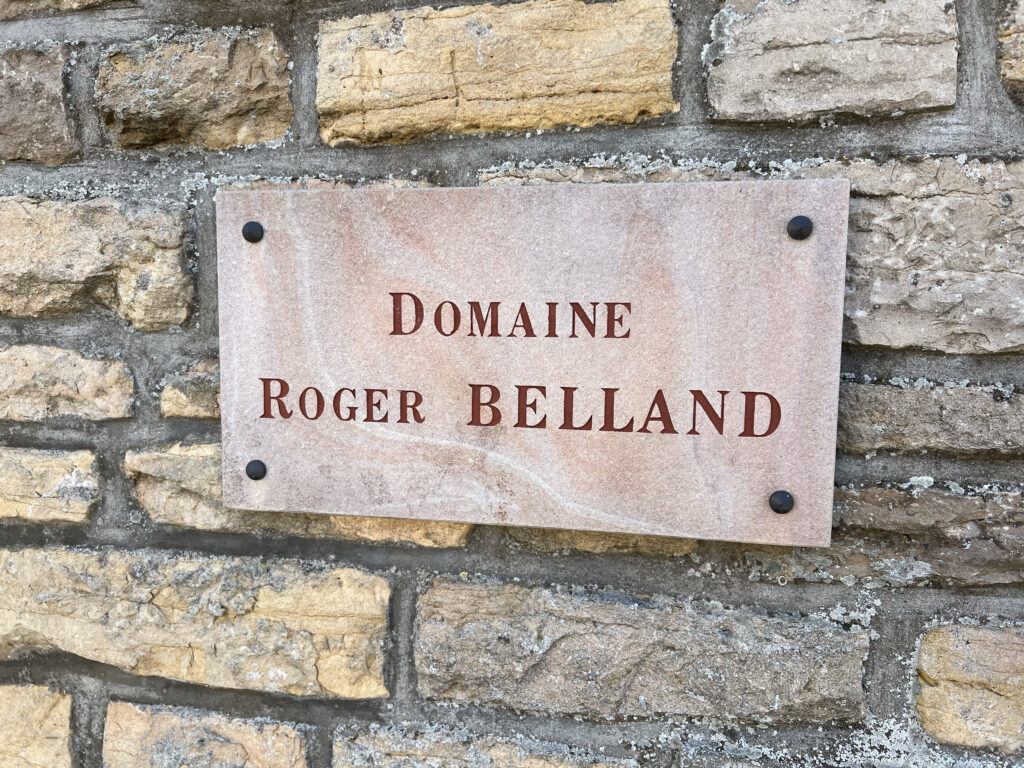
BELLAND Belland Santenay 1er cru “Beauregard” 2022: $450 Belland Santenay 1er cru “Beauregard” blanc 2023: $595 (wines marked * available by the quarter case, otherwise all wines available by the case and half-case)
(case prices)
Belland Volnay 1er cru “Santenots” 2023: $850
*Belland Chassagne-Montrachet 1er cru “Clos Pitois” 2023: $1,095
*Belland Puligny-Montrachet 1er “Champs Gains” 2023: $1,395
*Belland Meursault 1er cru “Santenots” 2023: $1,495
Domaine Mégard
Pommard, Burgundy
For generations the Mégard family has made a single Pommard cuvée from their four village level plots. We’ve become friends with the current generations, who spend much of the year in the States. Their wine itself is well-priced, delicious, and decidedly old school – even in recent hot vintages the wine retains its Burgundian elegance. Pommard is known for its intensity and bold character, but Mégard’s has a lighter touch. Much of it comes from vines year the Volnay border, and the winemaking style is traditional. We’ve stocked the wine in the store for years and it’s become a crowd favorite at Depot tastings in Newton. In this offering we’re suggesting the 2020 Pommard, a warm dry vintage with a few years under its belt now. The nose is expressive and high toned with pretty notes of dried flowers, raspberry and earth. The mouth is sturdy and ripe, but decidedly middle-weight with good freshness and excellent lift – look for notes of cassis, iron, and wild cherries. If you miss the Burgundies of twenty years ago, this will take you right back.
Maison Picamelot
Rully, Burgundy
Champagne’s pricing and re-corking mechanics mean most people don’t enjoy it regularly. But it’s a shame – sparkling wine is ageworthy, versatile, and remarkably food-friendly, and restricting your bubbles to Christmas and weddings means you’re missing out on a world of good wine. The solution to this problem is a $5 stopper and Crémant de Bourgogne. Good Crémant de Bourgogne offers an attractive relationship between price and quality. Our source for that is in the Côte Chalonnaise: Rully’s Maison Louis Picamelot. The Wine Advocate’s William Kelley writes that Picamelot “produces some of the best sparkling wines in Burgundy,” and “makes a persuasive case for taking the genre more seriously.” Philippe Chautard, the grandson of the founder, has taken the enterprise to a new level, transforming an old quarry on the edge of the town to a large underground cellar. This lets him give his crémants the time in the bottle he feels they need to develop their full complexity. First, Picamelot’s “Les Terroirs” Brut NV. A blend of Burgundy’s four grapes – Pinot Noir, Chardonnay, Aligoté, and Gamay – this delightful wine is a tremendous value. The nose is dry and classy, with notes of green apple, bread dough, and a pleasant nuttiness. It’s ripe and round in the mouth, lovely and full, and very gourmand. At $250/case, this is a no-brainer for weeknight bubbles. (It’s also our pick for kir bourguignons; see below.) The Crémant “Chazot” is pure pinot noir from a single plot just over the border outside Saint-Aubin. This has a lovely toasty brioche nose, with very fine bubbles and a long, clean finish. The pinot grapes add an intensity to the wine, but it’s blanc rather than rosé, and carries a sophistication and classiness not often found outside Champagne. Pair this with something you’d normally match with a red Burgundy, like roast chicken. Picamelot’s finest wine is their “Cuvée Jean Baptiste Chautard.” This blend of Aligoté and Chardonnay is terrific, and we think rivals many a Champagne at twice the price. (Indeed we often serve it next to Champagne at our tastings and it often outperforms the stuff from up north.) The current release is the 2016, which has been on lees for nearly eight years — a duration unheard of outside Champagne. It’s partially barrel fermented, adding a bit of weight and complexity to the juice. The nose shows pear and apricot, with notes of rising dough and (still) white Burgundy. The mouth is long and very tense, with an elegant blend of energy, richness and depth. With a Futures price under $30/bot, this is a compelling choice — we love our grower Champagne producers, but on quality-price ratio, this cuvée is an undisputed winner.
Ferme Fruirouge
Concoeur, Burgundy
The region of Burgundy is a food lover’s dream. Wine may be its best known product, but during our annual visits we love exploring other expressions of local terroir – epoisses, delice, escargots, pâtés, mustard, truffles and more. And one of our favorite local delicacies is crème de cassis, a blackcurrant liqueur and classically Burgundian drink. Tucked into a sleepy hamlet just over the western ridge of the Côte de Nuits lies the Ferme Fruirouge. The Olivier family has made cremes here for nine generations, and the farm itself dates back four centuries. Today they raise their fruits organically and biodynamically, and their crèmes are the cleanest, purest, most intense extraction of fruit we’ve ever seen. The hints of cassis we often describe in pinot noir are maximized here, and the taste is an extraordinary distillation of fruit. We add a splash of crème de cassis to a glass of Picamelot crémant for a delicious, attractive, effortless (and cheap) aperitif – a “kir bourguignon” if you will. Other ideas include a traditional kir (cassis and aligoté), communard (cassis and pinot noir), or cassis drizzled on crepes. (You can add it to champagne too, of course, though we think the cassis is flavorful enough that the trade up from crémant generally isn’t worth it.) These bottles keep well in the fridge for a while, and we’re offering them in 12x 375ml cases. They’ll be here by the spring (along with the Picamelot), just in time to ring in patio season in style.
Domaine Malmont
Séguret, Southern Rhône
There are winners and losers from the warming trend in France. Weather hazards aside, the Loire Valley and much of Burgundy have come out more or less ahead. In the south, the extremes have been less friendly. It’s no longer uncommon to find wines at nearly 16% alcohol – Grenache, Syrah and Mourvèdre soak up whatever sun they’re given, and there’s only so much winemakers can do to counter temperatures over 100F. All of this makes Nicolas Hanei’s wines from his tiny Domaine Malmont that much more exciting. Grown high in the hills above Séguret in the Southern Rhône, the Malmont vines struggle though rock-laden nutrient-poor soils, slowing their maturation. The west-facing hillside at 1200 feet of elevation enjoys plentiful breezes throughout the growing season, keeping the grapes cool and healthy. The resulting wines are almost an anomaly in the modern Rhône Valley: organic, delicious southern red blends that barely hit 13.5% alcohol. They show the dark, dense rich fruit for which the region is known, but always with vibrant tension and lift. If you miss the days when you could enjoy a southern Rhône red blend without having to take a nap afterwards, Malmont is the producer for you. Nicolas’s Séguret 2022 is the best he’s made, and we expect it to be a hit for years to come. The extreme heat and drought delivered loads of ripe, intense fruit; Nicolas extracted them minimally and perfectly, and the resulting wine impeccably balances lush fruit with a subtle, sculpted backbone. The nose shows the same wild strawberries we love in Jaqueline André’s exceptional Châteauneuf-du-Pape, with hints of gingerbread and pain d’épices too. In short, this is the most exciting southern Rhône red we’ve had in years – and with a $250/case price tag, this isn’t one to miss.
Charles Frey
Dambach-la-Ville, Alsace
The Alsace is not only among France’s most beautiful vineyard areas — a thirty mile slope at the eastern end of the Vosges plateau with medieval fortresses along the ridge and Germany’s Rhine just off to the east — it offers a break from the grape varieties that make up the majority of France’s wines. The Maison Charles Frey (successor to the Domaine Mersiol) makes delicious wine from two grapes that most lovers of French wine seldom see: Pinot Auxerrois and Riesling. Frey’s Pinot Blanc “Eclectic” is one of our favorite summer sippers. This wine is predominantly from Pinot Auxerrois, a little known variant of Pinot Blanc, and may be labeled with either name. (The Domaine Mersiol bottled this wine under the name “Auxerrois”.) It offers ripe orchard fruit with a touch of grapeskin and occasional exotic notes. There’s enough body to make it attractive all by itself, as an aperitif alongside a salty snack; but it’s also light enough to be an attractive partner to a dinner salad at the end of a muggy summer afternoon, whether on a roof deck, patio, or at an outdoor picnic. Last year we imported the just-bottled 2023 vintage, and it has only improved over the time it’s been here. Therefore we are recommending that vintage again. Riesling is one of wine’s noblest grapes. It is also something of a chameleon, with flavor and aroma greatly influenced by terroir. Germany’s steep northern valleys with slate-filled slopes can yield wine with particularly distinctive notes of petrol, while in other places this element is muted or absent. Our Riesling selections from Frey illustrate this diversity. The first takes its name from Dambach-la-Ville’s granite subsoils. Frey’s Riesling “Granite” 2023 is a bone-dry version of the wine. It is brisk and stony, with just hints of petrol over a core of lean yellow fruit. Pair it with anything that particularly matches unoaked wine, from sushi or sashimi to oysters on the half shell to fresh goat cheese. It’s lightweight, crisp, and full of life. The second Riesling on our list is from the Grand Cru Vineyard Frankstein, which combines granite subsoils with a location in a rain shadow below the Vosges escarpment. This vineyard produces bigger wine with more length. Frey’s Frankstein Grand Cru 2022 shows the grape’s more complex side. In the nose there are cloves and spice alongside ripe orchard fruit. In the mouth it is a sleek wine that flows across the palate. The finish is long, but never big — this is carefully channeled into a gorgeous, middleweight wine full of stones and bedrock. Finally, for those with a sweet tooth, we’re suggesting Frey’s 2023 Gewurztraminer Vendages Tardives, a late-harvest wine in a classical Alsatian style. This year’s is expressive and lovely, and somewhat less sweet than usual — the nose shows honeysuckle, mango, apricot and tangerine. The mouth is smooth and sweet but with good acidity and a clean finish that’s not sappy. Serve this instead of dessert, or with a plate of cold fruit. As is readily apparent, another feature of Alsatian wine is the reasonable price. We’re always glad to have all four of these wines around, and we find that our friends like the variety too.
Mélange Bordelais
Bordeaux
Bordeaux is distinct from Burgundy in countless ways; chief among them, scale. The region produces over a quarter of the wine made in France – more than Burgundy, Champagne, the Loire and Rhône Valleys, and Alsace combined. Famous names, stratospheric pricing, and required cellaring make it inaccessible to many (often including us). We spent much of a week there last spring, and got a feel for the region. There’s tons of excellent wine there, much of it is surprisingly well priced. But the distribution system – from chateau to négociant to importer – is an odd one, and makes it hard to get your head wrapped around (not to mention your hands on) the wines. So last month we asked a trusted négociant to send us a sample case of wines available, a range of prices, appellations, styles, and vintages. Last week we dutifully sat down and tasted them one after another (it was a long afternoon) and picked three we much enjoyed. First up, the right bank: 2018 Murmure du Larcis Ducasse St-Emilion Grand Cru. This was the wine that won the tasting, even beating wines at twice the price. It’s the second wine of the well-known and very well regarded Chateau Larcis Ducasse, a bottling that “flirts with perfection” in good years according to critic Jeb Dunnuck. In Bordeaux a “second wine” comes from grapes not included in the flagship label, and often represents excellent value and an early drinking window. We loved this wine. Among a crowded field of other St-Emilion, this showed a beautiful floral nose with violets and plum, and lush, very fresh fruit. The mouth is sturdy and rich, and every tannin is coated in gorgeous ripe fruit. We have two ideas on the left bank: Baron de Brane Margaux 2018 – another second wine, this one from the famous Margaux chateau Brane-Cantenac, a second growth property. This is 60% Merlot, 34% Cabernet Sauvignon, and the rest Cabernet Franc and Carménère. This wine stood out particularly for the nose. It has the high toned silky character of classic Margaux that’s somehow both elegant and musclular. The mouth is no slouch though, with an extremely well balanced mouthfeel showing graphite, earth, cassis and an old-school weight and shape. It’s more serious and less lush than the Murmure, as you’d expect from something on the Left Bank, but is drinking just as well now. Finally we’re suggesting the 2020 Chateau Cantemerle, an extremely old property (dating back to the 12th century), recognized as a “fifth growth” in the 1855 classification. This is the most serious of the three, with a gorgeous, deep, outstanding nose showing wild cherries, tobacco, and just a hint of spice. The mouth is sturdy and extremely well built, with tremendous concentration and a long impeccably balanced finish. There’s dark, rich fruit, solid structure, and impressive freshness. This is two years younger than the other two, but also has the longest time horizon – we’d put its peak in another 3-5 years. This drinks like a far fancier wine, and given a few years patience this should be a stunner.
Fattoria Poggerino
Radda in Chianti, Tuscany, Italy
Our relationship with Piero Lanza’s Poggerino stretches across more than two decades, and we can think of no producer with a better record of making consistently excellent wine. For a long time, we thought of Poggerino as our own, but over the years appreciation for both Piero’s skill and his terroir has grown. Antonio Galloni, the founder of Vinous and a world-renowned authority on Italy’s best wines, has been effusive in his praise, calling Poggerino’s Chiantis “some of the purest expressions of the Sangiovese grape in Italy.” A few words on the terroir: Poggerino’s vineyards lie in one of the coolest parts of Chianti Classico, and the combination of hot days and cold nights makes for slow ripening. This virtue allows the skins to achieve phenolic maturity (driven by sunlight, not heat) by the time the interior of the grape is ready for harvest. The resultant ripe tannins consistently allow Poggerino to avoid Sangiovese’s natural tendency to raspy harshness in its youth. Historically, Chianti winemakers dealt with underripe tannins by blending in juice from white grapes. (In fact, about a decade ago Piero showed us a few very old vines in the Bugialla vineyard – the source for his Riserva – that had white wine varietals grafted into the trunk of the sangiovese!) The rules in Chianti Classico require that Riserva age for at least 24 months before it is sold, so Poggerino’s wines always arrive in two vintages. This year it’s the 2022 vintage for the regular Chianti Classico, known formally as “Annata” (“vintage”), and the 2021 vintage for the Chianti Classico Riserva “Bugialla.” Last October the New York Times’s wine critic Eric Asimov wrote a piece about Riserva, and put Poggerino’s Riserva Bugialla 2021 on his short list of the best available. As usual, Galloni is a fan of Poggerino’s new releases. He found this year’s pair “another set of terrific wines from Piero Lanza,” calling them “transparent, nuanced wines that capture the essence of Radda.” For earlier drinking, the Chianti Classico Annata 2022 will be a great choice. In his October piece, Asimov confessed that for years his general Chianti preference was for Annata over Riserva because of its “gorgeous purity” and reasonable prices. Galloni thought the Poggerino 2022 Annata richer than usual, but also predicted that “this plush, open-knit Chianto Classico will drink well right out of the gate.” We found Piero’s 2021 Chianti Classico Riserva extraordinary – perhaps the best vintage he’s made. It’s long and sleek, packed with deep black fruit and tension. The oak is already integrated beautifully, as are the tannins. It will drink better young than recent vintages, but has more than enough material to go the distance. Galloni thought the 2021 Bugialla “another superb offering,” and awarded 94 points, finding “macerated black cherry, dried herbs, lavender and spice, all [ ] amplified in the glass.” Bear in mind that Riservas are big wines and generally need a few years to show their finer points. But not long ago we opened our last bottle of the 2001 Bugialla and found it was still a showstopper.
